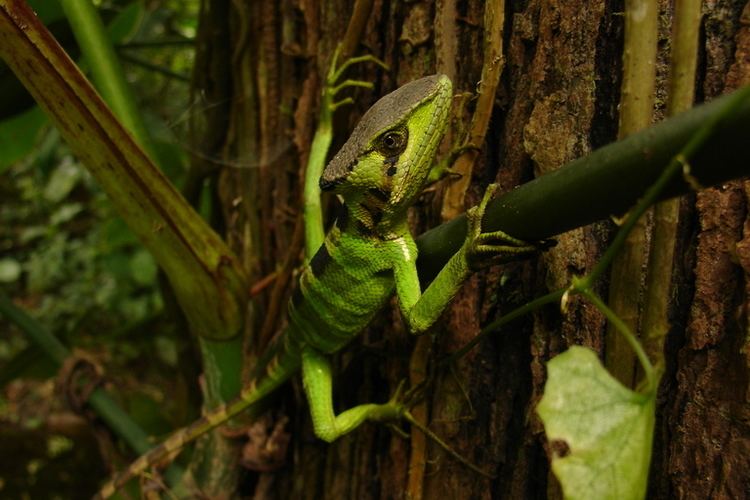Subphylum Vertebrata Suborder Sauria Rank Species | Phylum Chordata Higher classification Laemanctus | |
 | ||
Similar Laemanctus, Reptile, Laemanctus serratus, Corytophanidae, Helmeted iguana | ||
The eastern casquehead iguana (Laemanctus longipes) is a species of lizard native to Central America and Mexico.
Contents
Geographic range
It is found in southern Mexico (Colima, Oaxaca, Veracruz, Yucatán), Belize, Guatemala, Honduras, and Nicaragua.
Description
Long and thin, it can reach 70 cm (27.5 in) in total length, two-thirds of which is a thin tail.
The scales on the forehead are much larger than those on the back of the head. No projecting triangular scales occur on the posterior border of the head. The gular scales are bicarinate or tricarinate.
Sexual dimorphism is present, but is difficult to observe. Males have a somewhat thicker tail root than females, and the hemipenes are sometimes visible when lifting the tail gently.
Habitat
Eastern casquehead iguanas inhabit tropical wet, moist, and seasonally dry forests. It can persist in secondary growth when suitable trees are present.
Behavior
Eastern casquehead iguana is an arboreal species occurring high up in the trees. Rather slow, it sits on trees and bushes above water courses, licking water drops on leaves, and catching insects that walk nearby. L. longipes lives individually, or in a territory with one male and one to three females. Usually, however, males and females only meet for mating, which can happen several times per year.
Subspecies
Three subspecies are recognized, including the nominotypical subspecies.
Etymology
The subspecific name, deborrei, is in honor of Belgian entomologist Charles Preudhomme de Borre. The subspecific name, waltersi, is in honor of Leon L. Walters, who collected the type specimen with Karl P. Schmidt.
Captivity
These lizards are sometimes bred in captivity, but they are not good terrarium companions for beginners, as they quickly and often dehydrate. Daily misting or a water-dropping system is essential. Temperatures should range between 25 and 35 °C during day, and between 20 and 23 during night. Humidity should range between 70 and 90%. They are great cricket eaters and should receive at least four or five adult crickets every day. They also need UVA and UVB lighting and an additional vitamin and calcium feed once a week.
